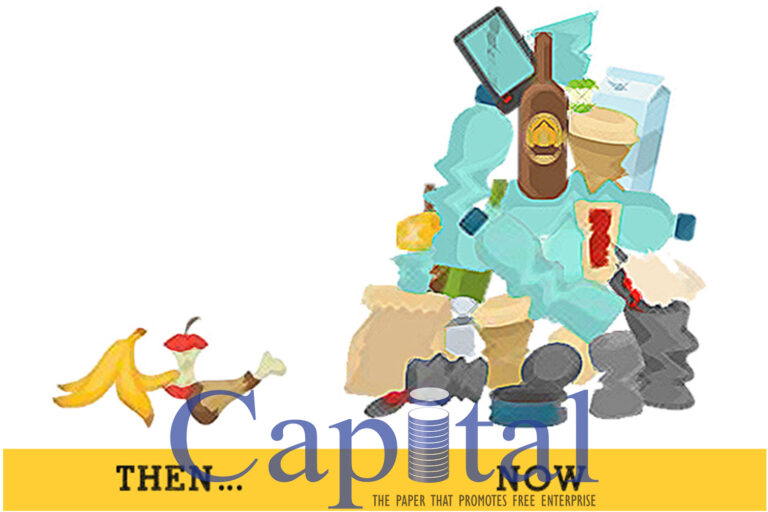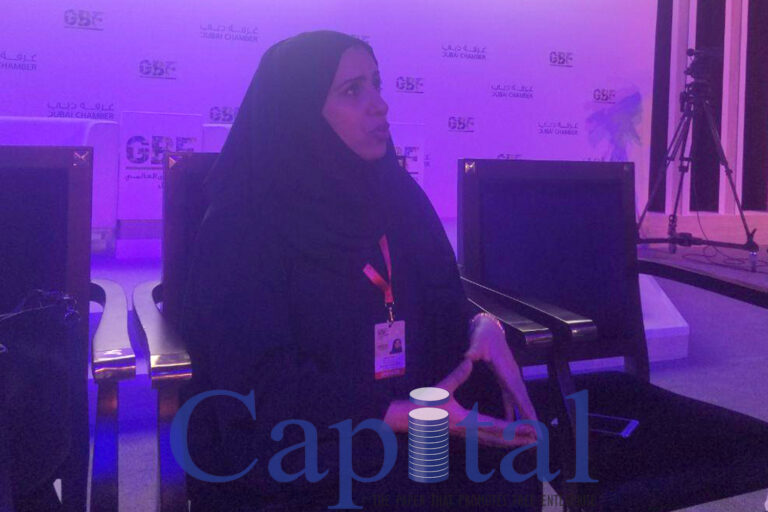It seems human beings living in late modernity are inclined to think linearly. Most likely, this not-so natural an inclination is accentuated as a result of rigid social organizations. From early childhood all the way to adulthood via adolescence, the global socio-economic route reinforces the linear bent in our psyche. If looked at carefully, the current global order, economic or otherwise, is fixated on structures and processes that encourage linear thinking. There is some justification. In the olden days, hurricanes, wildfires, etc., couldn’t be detected early enough to warn populations located along these trajectories of calamities. Of course, not everything that matters is still detectable, like earthquakes, etc. As a result of technical progress modernity has given us a certain sense of confidence when it comes to certain challenges. It is such knowledge that are indirectly reinforcing linear thinking!
By and large, urban life is predicated on linear thinking. Since over half of the global population is now urbanized, linearity has become the dominant paradigm. If the water runs, traffic flows and electricity is abundant, etc., the urbanized human mind extrapolates and imagines the future to be filled with more of these conveniences. Almost all challenges, including those of social nature, are tackled by linear thinking. If a million cubic meters of water/day is what it takes to service an urban enclave today, two million is what will be needed when the population doubles, goes linear thinking! This mode of existence is based on the supposition that man made artifacts/activities that sustain urban life can continue uninterrupted. Was Jakarta’s current sinking anticipated by linearity before its massive expansion? Moreover, whether resources/raw materials/sinks, etc. will be available tomorrow or not is not the concern of linear thinking. Just because things worked yesterday doesn’t mean they will keep on working tomorrow. Such a ‘normalcy bias’ (Nassim Talab) is at the root of modernity’s unsustainability. How many of the linear thinkers of the modern world system thought or are still thinking that urbanization would ultimately end up being an antilife scheme? See Smith’s article next column and Hamilton’s on page 38.
The globally dominant economic narrative is based on the monstrous fallacy of ‘infinite growth on a finite planet.’ Unfortunately, this ludicrous assumption pervades all establishment thinking. This notion has its origin in linear thinking and has become the operative ideology of late modernity. All dominant institutions of economic governance like BW, WTO, etc., preach this stupidity without shame. The indoctrinating institutions or what we call the ‘mills’ (universities, etc.) don’t allow non-linear thinking to creep into their backward looking mode of thinking. Consequently, the world is marching towards the precipice! Our elites in the so-called developing nations do not take the time to enquire about very fundamental issues, such as the availability of cheap energy to propel industrialization? Or where to find sinks to dump what is going to be a whole lot of waste coming out of the industrial processes? Fortunately, the global sheeple (human mass) has started to interrogate the useless narrative encouraged by linear thinking. The global mass is no more convinced about the capacity as well as the intention of the parasitic elites in handling the very complex and protracted problems humanity is currently facing.
The global elites have become like ‘Pavlov’s Dog’! The classic experiment by Paplov and his dog demonstrated that even humans are fallible to systemic manipulation. Those of us who are still poor need to look at things differently, if we want to extricate ourselves from the unsustainable quagmire we are wallowing in. ‘One of the most salient features of our culture is that there is so much bullshit. Everyone knows this… But we tend to take the situation for granted… (the bullshitter) does not care whether the things he says describe reality correctly. He just picks them out, or makes them up… (Bullshitters) continue making assertions that purport to describe the way things are but that cannot be anything except bullshit.’ ~ Princeton professor emeritus, Harry Frankfurt, 2005 Bestseller, On Bullshit
“The erroneous assumption is to the effect that the aim of public education is to fill the young of the species with knowledge and awaken their intelligence, and so make them fit to discharge the duties of citizenship in an enlightened and independent manner. Nothing could be further from the truth. The aim of public education is not to spread enlightenment at all; it is simply to reduce as many individuals as possible to the same safe level, to breed and train a standardized citizenry, to put down dissent and originality.” ~ H.L. Mencken, 1924. Good Day!
RETHINKING LINEAR THINKING
Dubai’s Customs World in search of hubs in Africa
By Ruth Brook
Dubai’s customs solutions business, Customs World, is looking to improve Ethiopia’s customs clearing as they open Dubai up to be a trade and customs gateway for countries in Africa, Asia and South America. The aim is to have customs cleared in Dubai before reaching the final destination, for a more efficient clearing process. This was discussed at the Global Business Forum (GBF) on Africa 2019.
The potential for African countries that can act as a hub for their respective regions, while mirroring the customs efficiency of Dubai, was also discussed at the forum. When choosing hubs in Africa, Customs World takes into account the country’s location, population, accessibility and the capability of their own airline. Furthermore, the organization prioritizes a country that has a trade facilitating government.
Although Nadya did not directly disclose which countries or ports would be the eventual hubs, she mentioned that talks are underway for the possibility of using the Assab Port in Eritrea. She also mentioned that “opportunity is huge” for the Berbera Port in Somaliland, highlighting its great potential.
“We provide trade solutions, we actually engage with a lot of governments around the world to reengineer their customs processes to move to the next generation. We have a platform called RIISE (Revenue Innovated Intelligence Secured Economy) because we think if you need to play with trade, the government should take the lead and customs should play a role,” said Nadya Kamali, CEO of Customs World.
Customs World is a government owned customs solutions business, established in 2002, that exports Dubai’s customs practices to the world. It is an entity belonging under Port Custom and Free zone Corporation. Customs World is a unique platform combining the different entities that are port authority, customs authority and free zone authority. It places them under one umbrella, making trade a “one man show”, according to Nadya.
The CEO emphasized that in order for this to be successfully implemented in Ethiopia, the cooperation of the Ethiopian government and security is needed.
“If I decide to put a truck in Addis Ababa and tell them to take the truck to any village in Ethiopia, I do expect that we will get the support of the government so the movement from the time the airplane lands until it clears doesn’t take more than three to four hours. Not three to four weeks,” she explained.
ESLSE issued bid again to buy 150 trucks
The Ethiopian Shipping and Logistic Services Enterprise (ESLSE) canceled the bid to procure 150 units of trucks stating the companies that participated in the technical evaluation are below their expectation.
At the beginning of the budget year the logistics enterprise floated an international bid to buy 150 of 6×4 truckers and 4 axle cargo semi-trailers.
The bid which attracted 14 companies including one local, was canceled due to the number of companies that fit the technical evaluation are lower than the bid requirement.
The bid was opened last December, while the technical evaluation started on December 17, 2019.
According to Wondimu Denbu, Deputy CEO of the Enterprise for Corporate Service at ESLSE, 14 companies participated on the bid and two of them failed on the primal evaluation.
“The 12 companies passed for the second step that is the technical evaluation,” he told Capital. However as Wondimu stated, the bid is canceled because there is only one company which passes the technical evaluation.
“At least three eligible bidders were expected to pass the technical evaluation and to go to the other step that is the financial evaluation,” the Deputy CEO explained.
He said that the sole multimodal operator in the country forced to issue fresh international bid that is already floated this week.
A couple of months ago the enterprise postponed the opening of the bid in relation with the issue of axle load standard of Ethiopia that is consulted by Ethiopian Roads Authority and Ministry of Transport. ESLSE was requested to import 4 axle load capacity truck that is not allowed in the country. In the current condition Ethiopia allowed tri axle that means the combination of three axles.
On the latest bid announcement ESLSE expressed its interest to buy 6×4 track truckers and 4 axle cargo semi-trailers that are trucks with drive train of three axles and 4 axle trucks with two front axles and driven rear axles.
As per the country’s law the maximum axle load allowed is 58 tones, but mostly trucks in the country load 40 tones.
Beside the 150 trucks the state logistics enterprise is also in the process to procure 15 units of RoRo trucks that carry small cars, and ten unites of low-bed semi trailer trucks, according to Wondimu.
Eight companies have participated to supply 15 units of car carriers and nine companies for the low-bed trucks, while only a single company passes the technical evaluation of the two bids same as the previous one.
Currently ESLSE has about 440 trucks including the 215 trucks, from one of the popular brand Renault Trucks, a French automotive company. Since they are recently bought the Renault trucks are high quality, but the others are not in good condition, according to experts.
Besides the 215 Renault trucks that were purchased about four years ago the enterprise had a collection of 230 that came from different organizations when the enterprise was formed under amalgamation of the Ethiopian Shipping Lines, the Dry Port Services Enterprise and the Maritime and Transit Services in 2012.
“The trucks are very old and as per our current study 123 trucks will be removed during the current budget year. After one trip to Djibouti they have to go to maintenance, which is not economical for the enterprise,” Wondimu said.
ESLSE is also leasing trucks from private transporters besides using its own. In the past budget year ESLSE, which is one of the mega public enterprises tabled on the latest privatization process on partial sales, has earned 1.7 billion birr.
In the current budget year the enterprise has targeted to transport 7.5 million tons in commodities, which was 4.5 million tons in the past budget year.
Berhan Insurance registers higher profit
Berhan Insurance concluded the past financial year with lower claim paid, while the gross claims incurred for the same period climbed by 55 percent compared with the preceding year.
The insurer’s annual report indicated for the 2018/19 financial year that the company settled 44.2 million birr claim that was 50.1 million birr a year ago.
At the same time the total claims incurred for the year was 103 million birr that was 66.6 million birr in the 2017/18 financial year, according to the report. It explained that the increment is 36.6 million birr or 55 percent compared with the preceding year.
On the report the company stated that the high claim incurred due to the increase of pecuniary class of business that increased by 390 percent in the 2018/19 financial year compared with the 2017/18 performance period.
Unusually in the industry the pecuniary class claims incurred has seat at the top again the common motor sector that affects most insurers businesses.
According to the report the pecuniary class claim incurred for the year has stood at more than 60 million birr that was 12.3 million birr a year ago. Surprisingly the motor class has reduced 24 percent and stood at 33 million birr claim incurred that was more than 43 million birr.
The report clarified that however the claims increased the reinsurance agreements smashed the risk.
“However the carefully designed reinsurance treaty helps to register the overall improved loss ratio of about 51 percent against 58 percent of the previous year,” the report explained.
Due to such achievement the underwriting result registers a 31 percent increment compared with the previous year performance.
The annual report of Berhan Insurance indicated that during the year the underwriting has stood at about 45 million birr, which was 34.3 million birr in the financial year that was closed June 30 2018.
Due the proper management on the risk and enable to improve the underwriting the company gross profit before tax has also registered a quarter increments compared with the preceding period.
Meanwhile the net income that also included investment income of the company has grown to 68 million birr that was 56 million birr a year ago.
The report of Berhan stated that the company profit before tax stood at 25.5 million birr that was 20.5 million birr a year ago.
The profit after tax has also climbed by over four million birr and reached at 24.5 million birr that was 20.5 million birr in the 2017/18 financial year.
That the same time the earing per share has also stood at 24 percent, while it has been 22 percent a year ago.
For the year the gross written premium income has climbed by 17 percent compared with the 2017/18 budget year and stood at 122 million birr that was 104.3 million birr a year ago.
As the sector usual dominance the motor class of business has produced the lion share by close to 71 million birr that was over 61 million birr a year earlier. From the total written premium the motor class produced 58 percent for the year and pecuniary class of business followed by 20 million birr or 16 percent from the total share.
The insurance company asset has climbed to 410 million birr that grew by 94 million birr or 30 percent.
As of the end of the last financial year that is June 30, 2019 Berhan Insurance has 15 branches and two contact offices.






